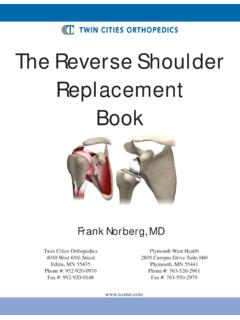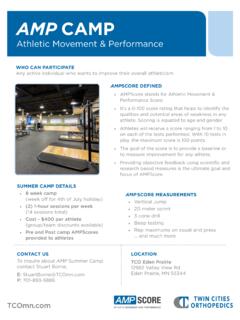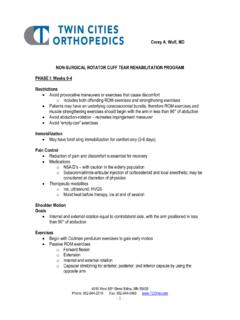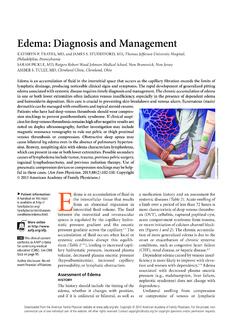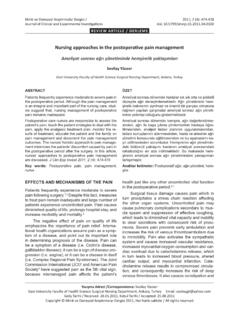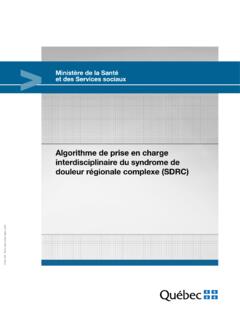Transcription of Distal Radius Fracture Non-Operative Rehabilitation …
1 TJ Ridley, MD Phone: 763-717-4120 | Website: | Instagram: Distal Radius Fracture Non-Operative Rehabilitation Protocol The goals of this protocol are to minimize post-op immobilization stiffness with maximizing digit and wrist ROM (especially supination), and improving grip strength. PHASE I IMMEDIATE POST-INJURY PHASE (WEEK 0-2): Splint o Patient to remain in post-reduction splint Activity o Patient to independently begin early finger range of motion and forearm rotation o Full elbow and shoulder motion in all planes to prevent joint stiffness Medications: o Short course of narcotic pain medication is prescribed ( Oxycodone, Percocet, etc.) o OTC NSAIDS (ibuprofen, naproxen) o OTC Vitamin C (500mg for 50 days) This has been shown to reduce the risk of complex regional pain Syndrome (CRPS) No formal therapy needed until 6 weeks post op PHASE II IMMOBILIZATION PHASE (WEEK 3-5): Initial splint removed Patient to be fitted with a short arm cast Continue finger motion and forearm rotation Patients should be off of all narcotics at this time Patient education to include Fracture precautions, anatomy, progression of bone healing, implications of immobilization.
2 O Smoking cessation education as needed PHASE III EARLY Rehabilitation PHASE (WEEK 6-8): Cast removal and placement into a removable splint Begin formal physical therapy following cast removal, 2x per week Begin gentle active wrist range of motion Lifting restriction: 5lbs Continue finger motion o Include intrinsic stretches and home program o Thumb IP blocking exercises Continue forearm, elbow and shoulder range of motion as needed Edema reduction techniques including Isotoner glove, edema mobilization massage, Kinesiotape Monitor for signs of CRPS o If present, begin CRPS protocol to include desensitization PHASE IV ADVANCED MOBILIZATION PHASE (WEEK 9-12): Frequency of therapy 2-3x per week for range of motion as needed Wean from removable splint Begin passive wrist range of motion Begin strengthening as tolerated Lifting restriction: 10lbs At 10 weeks, initiate work conditioning for those with heavy manual labor occupations PHASE IV RETURN TO ACTIVITY PHASE (WEEK 13+: Frequency of therapy 1x per week as needed Continue advancement of strengthening Lifting restriction: advance as tolerated May begin impact loading Full functional use as tolerated Return to unrestricted activity with return to manual labor and sports as tolerated Full function after a wrist Fracture usually takes at least 6 months and up to 2 years to achieve.)
3 O Emphasize to the patient the need to continue home exercises as well as the fact that they will continue to improve for quite some time.

